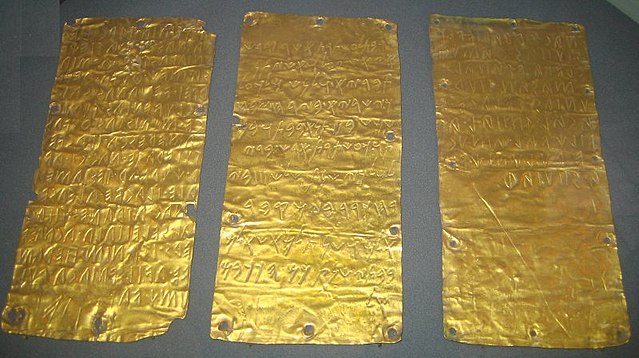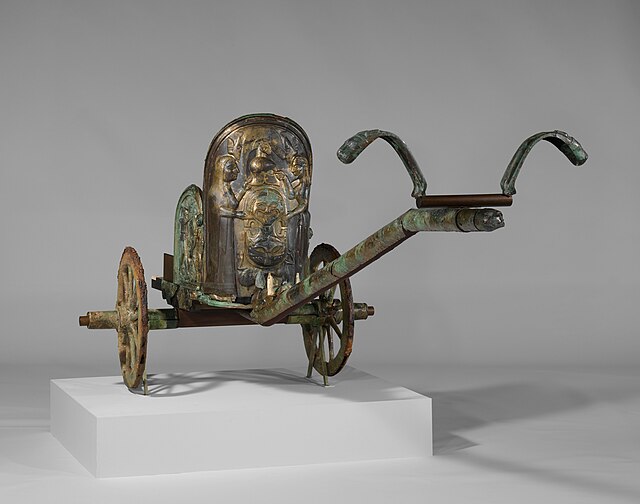Etruscan was the language of the Etruscan civilization in the ancient region of Etruria, in Etruria Padana and Etruria Campana in what is now Italy. Etruscan influenced Latin but was eventually completely superseded by it. The Etruscans left around 13,000 inscriptions that have been found so far, only a small minority of which are of significant length; some bilingual inscriptions with texts also in Latin, Greek, or Phoenician; and a few dozen purported loanwords. Attested from 700 BC to AD 50, the relation of Etruscan to other languages has been a source of long-running speculation and study, with it mostly being referred to as one of the Tyrsenian languages, at times as an isolate and a number of other less well-known theories.
The Cippus Perusinus, a stone tablet bearing 46 lines of incised Etruscan text, one of the longest extant Etruscan inscriptions. 3rd or 2nd century BC.
The Orator, ca. 100 BC, an Etrusco-Roman bronze sculpture depicting Aule Metele (Latin: Aulus Metellus), an Etruscan man of Roman senatorial rank, engaging in rhetoric. The statue features an inscription in the Etruscan alphabet
The Pyrgi Tablets, laminated sheets of gold with a treatise both in Etruscan and the Phoenician language, in the Etruscan Museum in Rome
Tumulus on a street at Banditaccia, the main necropolis of Caere
The Etruscan civilization was an ancient civilization created by the Etruscans, a people who inhabited Etruria in ancient Italy, with a common language and culture who formed a federation of city-states. After conquering adjacent lands, its territory covered, at its greatest extent, roughly what is now Tuscany, western Umbria, and northern Lazio, as well as what are now the Po Valley, Emilia-Romagna, south-eastern Lombardy, southern Veneto, and western Campania.
Biconical cinerary urn with crest-shaped helmet lid, 9th–8th century BC, from Monterozzi (Fontanaccia), Tarquinia, Museo archeologico nazionale
Urn in the shape of a hut, which represents the typical Etruscan house of the Villanovan phase, 8th century BC, from Vulci, Musée d'art et d'histoire de Genève
Monteleone chariot, one of the world's great archaeological finds, 2nd quarter of the 6th century BC
Etruscan pendant with a large equilateral cross of concentric circles flanked by four small right-facing swastikas among its symbols from Bolsena, Italy, 700–650 BC. Louvre







